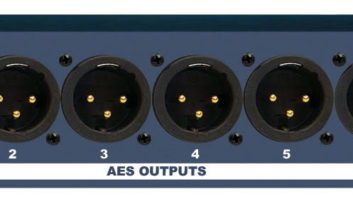The advent of Internet Protocol in the broadcast facility has forced engineers to learn how to troubleshoot IP.
This is not the same as troubleshooting analog. Yes, we have to follow packets just as we would follow a signal, but different tools are required.
Many engineers have particular “go-to” tools. One of mine is the software program Wireshark. It is a free and open-source packet analyzer for network troubleshooting and analysis.
“It lets you see what’s happening on your network at a microscopic level,” the website states. “It is the de facto (and often de jure) standard across many industries and educational institutions.”
Being able to see what a device is doing on the network layer is very useful, and the functions can be logged.
Wireshark can show you where there is slowness on the network layer. It also can show conflicts. When a member of the audience for your stream is complaining about bad reception or too much buffering, Wireshark allows you to trace the stream from their receiving device all the way to the source.
You will be able to trace all the “hops” and narrow down issues, i.e. bad switch or firewall.
Wireshark allows you to follow the packets. This is important because problems may affect more than one person in your audience. Let’s face it, this is customer service. We owe it to our listeners to provide this kind of support. They’re our customers. And broadcast streamers are competing with streaming services.
For more on Wireshark, read Stephen Poole’s archived article “The Power of Wireshark.” The tool has been upgraded since he wrote it and the screen images may have changed, but the essentials are the same.
And a tip about working with Wireshark: Be careful not to leave the logging on. It gathers so much information that you’ll quickly consume your hard drive space.
But sometimes a complex tool like Wireshark isn’t needed. Using a website like www.whatismyipaddress.com, the audience member can tell you the public-facing IP address as well as their internet service provider, city and region.
On the audience member’s PC, have them choose “Complete IP Details” and they can tell you the longitude and latitude (though this is not always accurate). If needed, you can perform a traceroute (or tracert) from the source to the customer and it will work from a command prompt. This can reveal the IP address of the device causing the issue. The problem could be as simple as a port not allowing the stream to pass, or a larger issue such as an equipment failure.
Cooperation from your customer will make the job easier; without it, sometimes you can do nothing. Be grateful for such assistance, which will help your reputation, while the customer will feel good helping you.
The ability to troubleshoot can be essential on the open internet or a closed network and when using any of the media IP protocols (e.g. AES67, Dante, Livewire, WheatNet, Ravenna). Many companies are calling streams a direct-to-consumer or DTC service, which carries the assumption that you will support the users consuming your streams.






